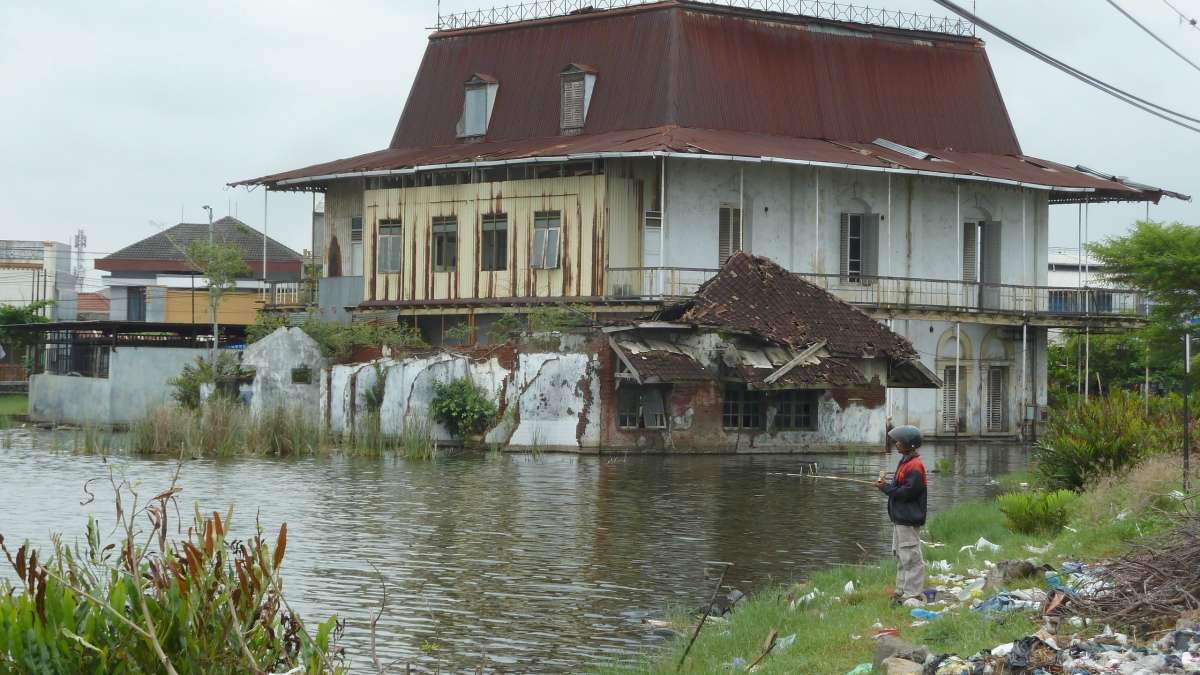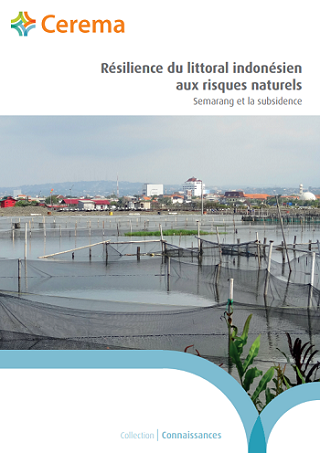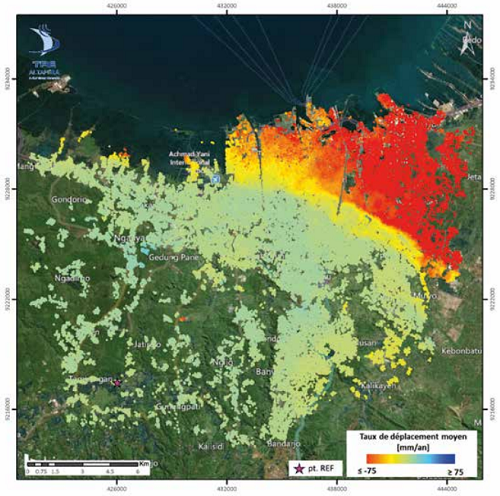

This work was produced following a Cerema mission in Indonesia, with the University (UNDIP), in Semarang, a city of 1.7 million inhabitants on the island of Java in Indonesia, located on the coastline and on a hillside.
The objective was to understand from the case of Semarang, the challenges that coastal areas may face in a context of urbanization and climate change.
A coastline impacted by urbanization and subsidence
The particularity of the coastline of Semarang, which is densely populated, is due to its exposure to a very active subsidence, which results in a subsidence of the ground up to 13 cm per year. The city has developed towards the coast, on unconsolidated sedimentary soils of the quaternary period.
Due to urbanization, this coastal strip is subjected to the effects of subsidence, that is to say the settlement of the soils, combined with a strong marine erosion and arise in sea level. The demographic increase also has indirect aggravating effects on the risk of flooding.
Cerema has conducted an analysis in collaboration with Diponegoro - Undip University (Indonesia) to identify the processes at work. The work produced was supported by the French Embassy in Indonesia and the ministries in charge of research and foreign affairs of both countries.
For five years, Cerema and scientists from Cerema and UNDIP identified the processes at work, then deployed a resilient approach to identify solutions.
The first part of this book reviews the general issues of the littorals as fragile urbanized spaces and on the intervention of Cerema and UNDIP in Semarang. In the second part, an analysis of the area highlighting the phenomenon of subsidence and the challenges related to the future of the coastal strip is proposed. Indeed, the area presents vulnerabilities at different levels: population,
Resilience, a co-construction approach

Sectoral actions are not enough to act on the ongoing process in progress: it is by applying the concept of resilience that a way is opened towards the search for adapted responses. The third part of of the book presents an approach to territorial resilience and the principles of a subsidence observatory.
Resilience, which aims to take into account the various disturbances that can affect an area and interfere with each other, must allow for the development of the local economy in acceptable conditions by responding collectively to the challenges it faces, in particular the effects of climate change.
This approach has been applied in Semarang, with the proposal to create a local observatory of subsidence and its effects on the coastal strip. This observation step is necessary to capitalize on the often scattered data and structure a network by bringing together public and private stakeholders.
This observatory will also make it possible to plan urban development in a strategic manner, and to produce actions that contribute to the resilience in the area.
This approach to developing a resilience dynamics covered different actions actions:
-
Create a link between scientific knowledge and practitioners (dissemination and sharing of knowledge),
-
To improve the understanding of the phenomena underway on the coastal strip and their urban impacts,
-
Identify the needs of impacted people: residents, companies managers,
-
Propose a project in the sense of a collective action involving decision-makers.
Four main areas of work have been identified for this resilience approach:
-
Establish a device for observing the effects of effects of subsidence,
-
To improve the living conditions of the inhabitants through the development of a resilient housing,
Widely illustrated, the book benefits from contributions from scientists and experts who have worked in the Semarang area in different contexts, thus bringing their own vision to the analysis of the situation.
-
Adapting urban infrastructures through technical innovation,
-
Promote comprehensive water management.

